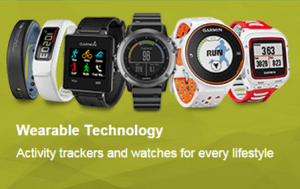Garmin, the definitive winner in the sports & fitness devices industry
Into sports, into twitter, into facebook and with real time tracking…
This company is clearly one of the big winners in this digital revolution that is transforming the way how we do much of our daily activities. Nowadays Garmin concentrates the biggest sports community in their platform (Garmin Connect) and they are the number one seller of sport watches and wearables and have with an amazing product portfolio with devices for beginners to elite athletes. They are present in all social media, from twitter to Facebook and their devices allow sport practitioners from all disciplines to interact each other in real time or with their friends in an easy way. Friends or family can monitor where their athlete is and how is performing (which speed, RPMs, or vertical oscillation is performing with. With their wearable devices people can seamless synchronize with their smart phones and keep track of their health. And for those serious on performance, Garmin offers an exclusive line of sensors to monitor key parameters such as ground contact time with technology based on accelerometers. And for those that love riding, Garmin develop the first affordable power meter that is attached seamless to the bike (like a common pedal). The device can be switched from one bike to other easily in contrast to the common power meters that are fixed to the drivetrain.
Certainly only few years back (less than 7) the number one brand in sport watches was Polar® – who was the first brand to introduce the heart rate monitor for continuous reading during training or competition- Since then, Garmin started a very aggressive competition that started with a tough decision. They decided to go with an open protocol for transmitting sensors information wirelessly to their devices. Instead of keeping their own protocol (as Polar® did) they decided to go with ANT+ protocol which allow Garmin watches users to pair with sensors from multiple brands. In this value proposition Garmin committed to release new updates to their devices for free and this new devices included new features to be used with sensors produced by other companies. This is when Garmin settled a distinction as they were the first brand allowing the updates of their devices not only to fix bugs but to improve the device content. The updates are done thru the site where users are invited to store their training or competition data. With this, the value created by Garmin was to allow the customer to have a watch that was increasing its features over time without the need to but Garmin products. As a result of this, the Garmin Connect site (the platform where people stored and visualize their sports activities) became the most crowded. Certainly Garmin was promoting that the sports community to stick with them because staying connected to their platform was always a good way to be informed of new updates. In addition the design of the platform had simply no equal offering what sport practitioners really want and value. Now with the new devices, users can create their own apps, which allows a superior experience.
In summary, in terms of sports devices and wearables, Garmin has been always on top to understand how to better align the new possibilities that the digital transformation (new electronics and new sensors, data analytics and machine learning) brings in favor to the customer and making the best use of the data they have collected from the always increasing sports community





Guillermo, I enjoyed reading your post. I’m worried about Garmin’s future though. Similar to how smart phones largely eroded the demand for in-car GPS units from Garmin’s car navigation business, I wonder how smart watches and other smart wearables may disrupt their sport watch business. Certainly, their technology today is superior to the fitness wearables on the market today and likely the preferred solution for elite athletes, but smart watches and wearables are putting heart rate monitors and accelerometers to work in similar ways, and sometimes doing more than just fitness. The Apple Watch may not emphasize the sports/fitness aspect as much as it could, but the capabilities of the watch are quite impressive from a health/fitness standpoint. I presume the next model will only get better, along with the watches other features. If a device can do the job “good enough” while also providing other capabilities the user may want outside of fitness, I see this as a threat to Garmin’s position. Curious to hear your thoughts!
totes.
I enjoyed reading your post! I bought a Garmin watch when I trained for a marathon, but I haven’t used it since. Instead I’ve started using Strava, which I think provides me with similar information and it’s easier to use. I’d be curious to hear your thoughts on Strava and whether you view it a real competitor to Garmin?
Garmin definitely makes awesome hardware, but I agree that from a UX and social perspective, Strava totally crushes it. I think that Garmin felt pressure to create its Connect service because it was the natural next step, but this type of software is outside of its core competency. Also, open platforms like Strava have a major advantage by accepting data from any source. I’m interested in following the awesome rides and runs of the people in my training group, and I don’t want to miss out on that if they use non-Garmin devices.